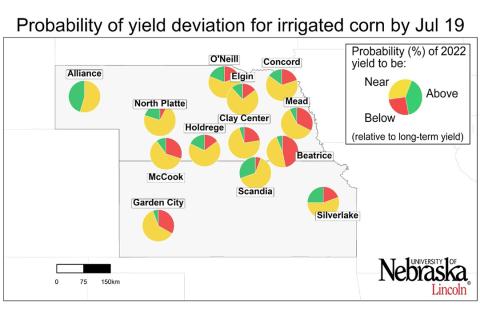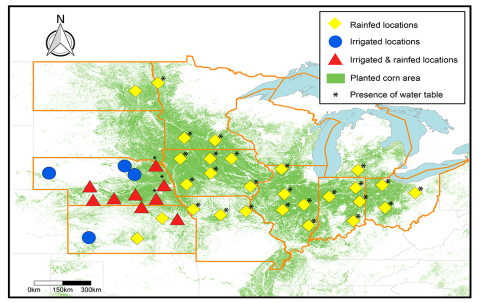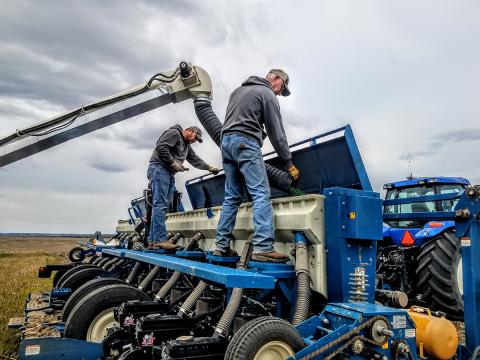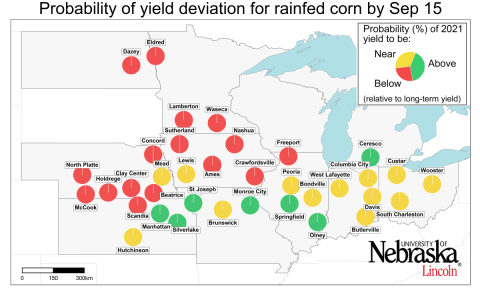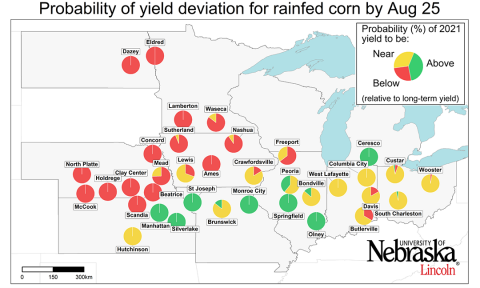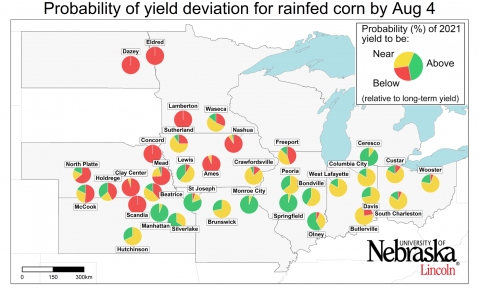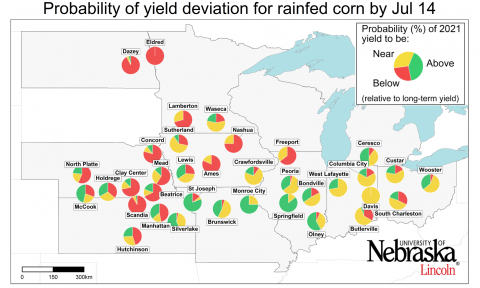2022 Corn Yield Forecasts as of Aug. 2
August 4, 2022
There continues to be a high probability of near-average yields for most irrigated sites in the Corn Belt, while rainfed corn sites have a high probability of below-average yields in Nebraska, Kansas and Iowa.
2022 Corn Yield Forecasts as of July 19
July 20, 2022
Although it is still too early to make strong inferences about end-of-season yields for irrigated corn, there is a relatively high probability for near-average yields for a majority of sites.
2022 Corn Yield Forecasts: Approach and Interpretation of Results
July 6, 2022
The Yield Forecasting Center (YFC) will provide real-time information on corn phenology and forecasts of corn yield potential to aid growers and ag industry in making management, logistics and marketing decisions through the 2022 season.
Farmer Focus: Nebraska Producers Evaluate Practices to Increase Soybean Yield, Profit Through On-Farm Research
April 21, 2022
Nebraska farmers highlight their results from a three-year on-farm research study that evaluated a suite of management practices to increase soybean yield and profitability.
2021 Corn Yield Forecasts: End-of-season Forecasts Suggest Near to Below-average Yields for the Region
September 16, 2021
In line with our previous reports, our forecasted yield potential this season seems to be 10% below the historical average.
2021 Corn Yield Forecasts as of Aug. 25
August 25, 2021
In line with previous forecasts in mid-July and early August, there is no indication that this is going to be a record — and not even an above average — year for national corn yield.
2021 Corn Yield Forecasts as of Aug. 4
August 4, 2021
Below-average rainfall has increased the probability of low yield for rainfed sites in western and northern parts of the Corn Belt and central Iowa.
2021 Corn Yield Forecasts as of July 14
July 14, 2021
Although it is still too early to make strong inferences about end-of-season yields for irrigated corn, there is a relatively high probability for near-average yields for a majority of sites.


